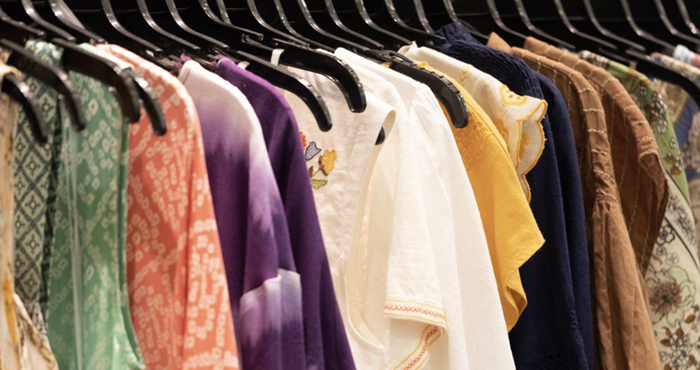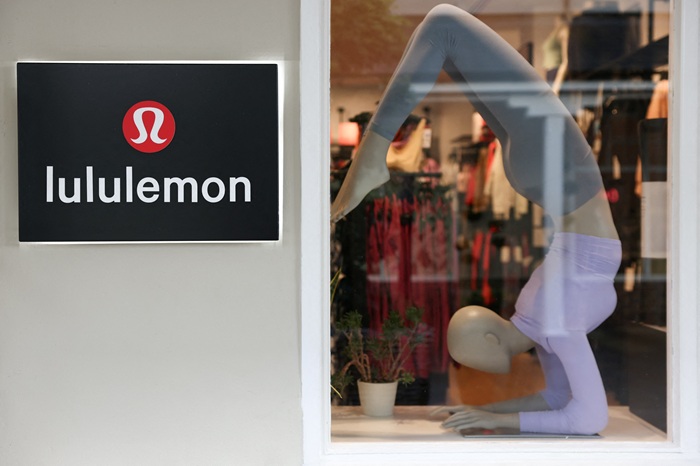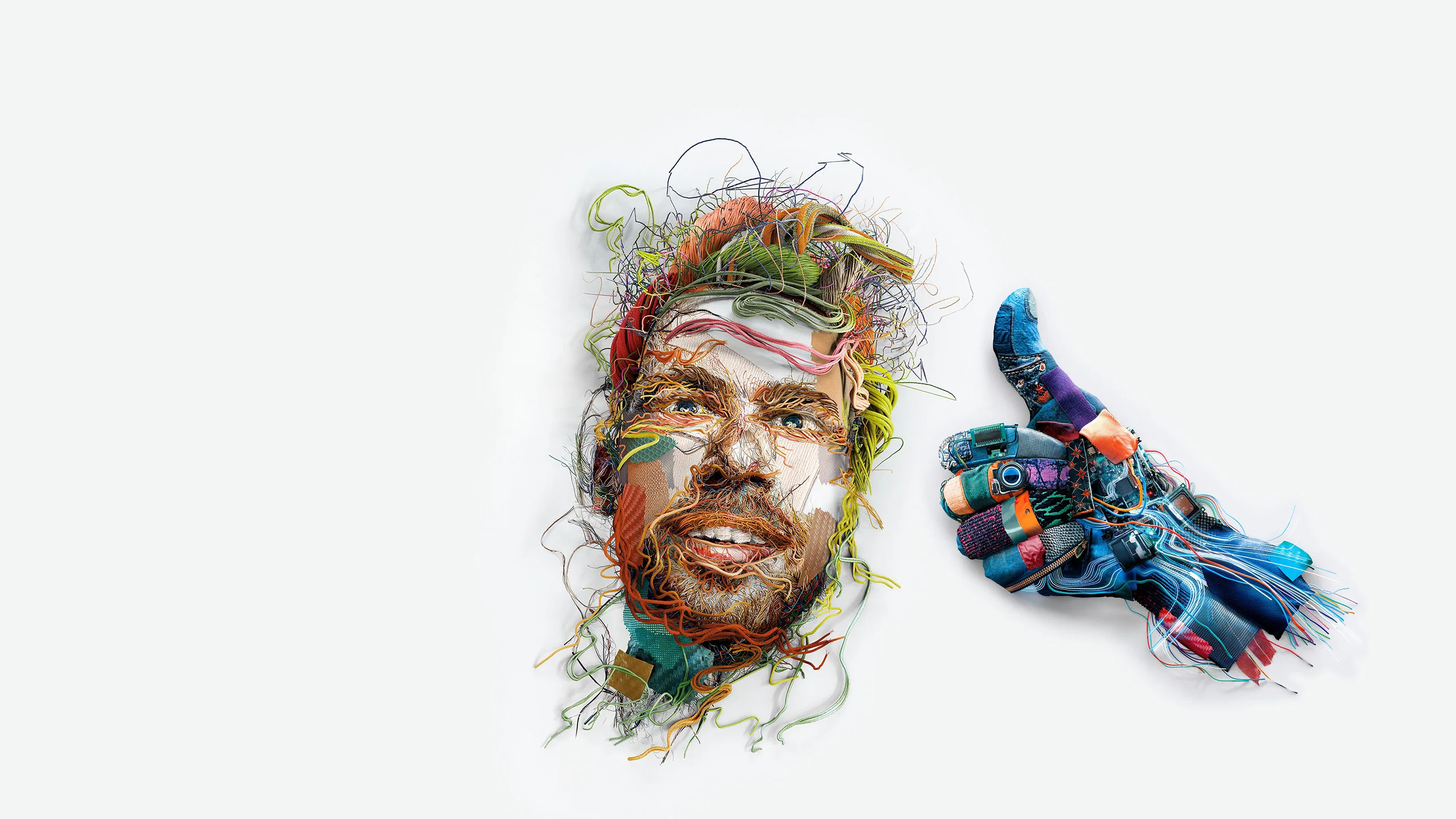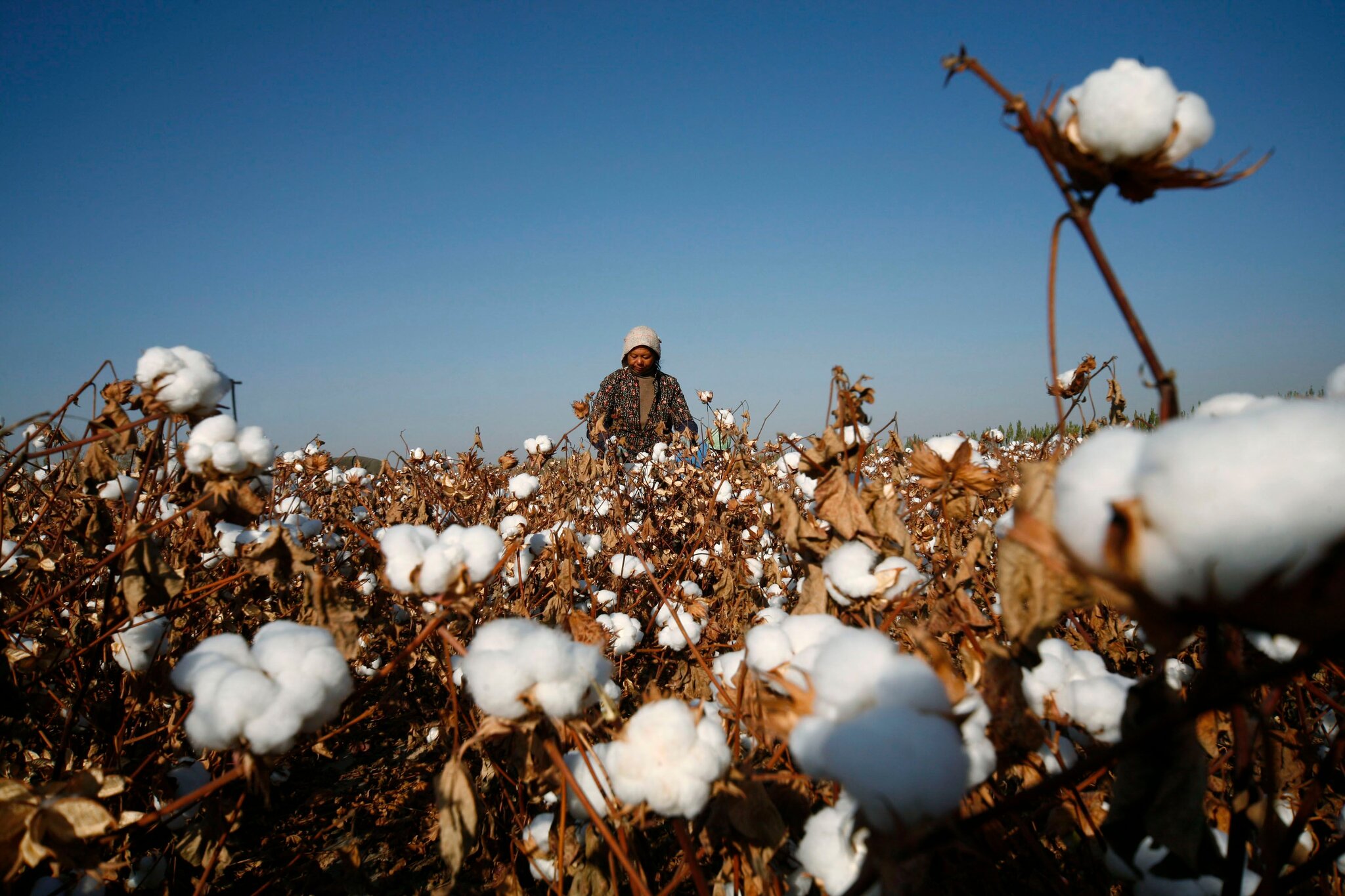FW
The US has asked India to consider relaxing local sourcing norms in single-brand retail trade to help American companies such as technology major Apple. The issue was highlighted at a meeting between Commerce and Industry Minister Nirmala Sitharaman and US Trade Representative Michael Froman. However, India pointed to reforms in foreign direct investment (FDI) norms that allow relaxation in local sourcing norms in specific cases. In July last, the government had announced relaxation of FDI norms by giving a three-year exemption to foreign players from local sourcing in single-brand retailing and a five-year relaxation for companies providing cutting edge technology. But companies like Apple had sought a blanket exemption.
After the rules were relaxed, Apple has not approached the commerce ministry yet. At present, 100 per cent FDI is permitted in single-brand retailing, but it requires 49 per cent permission from the Foreign Investment Promotion Board. India has pushed for a greater market access for agricultural export as well as institutional mechanisms to improve food export.
Universal Textile is one of Taiwan’s oldest manufacturers of textiles. The company specializes in synthetic woven fabrics and yarns. It has developed a range of linen fabrics using synthetic yarn. This fabric is easy to handle, does not pill after wash and, more importantly, comes at half the cost of linen. On the lines of the linen look, the company has also developed a jute look fabric from synthetic yarn. Universal has two weaving factories with a capacity of three million yards and one yarn factory with a capacity of 2,500 tons per month. Universal currently has 300 looms out, of which 192 are Picanol air jet looms and 72 Tsudakoma water jet machines. In the spinning unit, the company has machines from Muratec and TMT.
The company exports 90 per cent of its products to the US, Europe, Africa and the Middle East. Its current turnover is 75 million dollars. Universal has been supplying key customers in India, including Gokaldas, and many others in Sri Lanka and Bangladesh. It believes that India will become a huge market in the future and is eager to cater to a country with a GDP growth rate of 7.5 per cent and a young population.
Post the re-launch of its global textile business, Microban International, a leader in antimicrobial solutions, has expanded its global textiles team. The appointees include Thomas Case, Director of Business Development for textiles; Zsolt Huszágh, head of textile business development in Europe; Lance Li, senior formulations chemist; Jerry Wang, regional director of Asia Textile Services and Simon Zhao, senior technical engineer and business development specialist.
With the re-launch of Microban’s global textile division, it was vital to bring in additional assets to strengthen and manage customer relationships and product offerings, observed Lisa Owen, senior director of global textiles business at Microban. As director of business development for textiles, Case will be responsible for the Microban and Aegis brands in the Western US, Central America and Mexico. He would target marketing and materials innovation executives of leading active wear, apparel and footwear brands and coordinate programs globally with customer mill partners and Microban teams.
With 20 years of experience in B2B industry sales, marketing and business development, combined with his knowledge of the textile industry, Huszágh will be responsible for leading business development in Europe. Additionally, he holds a textile chemistry degree, and his background includes seven years of leading international sales teams, and eight years of international marketing and communication.
Interacting with the R&D teams, engineering groups and testing laboratories, Li will develop technologies and protocols to assess the performance of surface treatments. He designs new, or improves existing, liquid base coating formulations that keep surfaces cleaner through the reduction of bacteria, odours and soils. Li has more than 10 years of experience in formulations, synthesis, purification and characterization of small molecules, monomers, polymers and nanocomposites using standard analytical tools. Additionally, he has work published in more than 15 papers in his respective fields of expertise.
Working with Asian textile mills, Microban R&D, Microban sales and distribution partners, Wang will leverage his expertise in textile processing through integration of Microban odour control solutions into customer textile products.
Zhao has been with Microban since 2013 and will take on additional responsibilities in his new role, providing technical sales support to China based brands and manufacturers, while continuing to work technically with apparel customers throughout Asia. He has more than 10 years of experience working in textile chemistry and functional textiles industries. Through his past work, Zhao has proved to be an expert in the field of textiles production involving pre-treating, dyeing, printing and post-finishing.
After the presidential elections conclude on November 8, the US fashion industry will convene a meeting to discuss the results and likely impact on trade and transportation for the apparel supply chain. The United States Fashion Industry Association (USFIA) and American Import Shippers Association (AISA) will host the 28th Apparel Importers Trade & Transportation Conference at the Tribeca Rooftop on November 9. This meeting would bring together several hundred executives working in compliance, logistics, sourcing, supply chain management, government relations and social responsibility, it is learnt.
Julia K Hughes, President of USFIA says this was a critical time for the fashion industry because for the first time in recent memory, both presidential candidates are calling for protectionist trade policies. The industry was eagerly awaiting passage of the Trans-Pacific Partnership (TPP) and the transportation community is trying to figure out the path forward after the Hanjin bankruptcy. All these issues will be discussed at the meeting.
Confirmed speakers include: Todd Owen, Executive Assistant Commissioner at U.S. Customs & Border Protection’s Office of Field Operations; J. Berrye Worsham, CEO of Cotton Incorporated; David Spooner of Barnes & Thornburg LLP, former Chief Textile & Apparel Negotiator at the Office of the US Trade Representative and former Assistant Secretary of Commerce for Import Administration; and, executives from American Eagle Outfitters, Macy’s and Anthropologie/Urban Outfitters among others. The conference will also feature a Transportation Executive Forum, with speakers from CMA CGM Americas, Maersk Line North America, The Port of Long Beach and the Transpacific Stabilization Agreement speaking their hearts out. The United States Fashion Industry Association represents the fashion industry: textile and apparel brands, retailers, importers, and wholesalers based in the US and doing business globally.
The cost of clothing in the UK could rise post Brexit. Shoppers have already seen clothing prices increase by 0.1 per cent in September 2016 as the falling value of the sterling makes imports more expensive. Many UK fashion chains import yarn and some manmade materials from abroad, making them vulnerable to currency fluctuations. If they import from China or India, the cost of yarn and raw materials are US dollar denominated. That impacts the cost. Aside from rising costs, there is the potential impact on tariffs from a hard Brexit.
If the UK does not reach a post-Brexit trade agreement with the EU by 2019, the nation could be forced to use World Trade Organisation rules. This would mean tariffs on food and clothing rising sharply, with clothing and footwear prices going up by 16 per cent. Brexit could also affect consumer behavior.
Critical to the UK is immigration. The country’s success is dependent on immigration. It may be necessary to manage the amount of immigration but a ban on immigration could be disastrous. Trade relationships will have to be maintained and new trade relationships have to be found. Continued single market membership would be helpful.
"Due to government’s negligence, Pakistan’s textile exports have been bearing the brunt. Industry representatives asserted if you see the progression of industrial sectors and exports of regional players, they don’t stand anywhere. Bangladesh, India, Sri Lanka, Taiwan, Malaysia, Hong Kong and Indonesia have leaped miles away in exports and industrial growth."
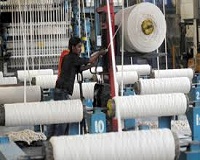
Due to government’s negligence, Pakistan’s textile exports have been bearing the brunt. Industry representatives asserted if you see the progression of industrial sectors and exports of regional players, they don’t stand anywhere. Bangladesh, India, Sri Lanka, Taiwan, Malaysia, Hong Kong and Indonesia have leaped miles away in exports and industrial growth.
Exports of textile made-ups, hosiery, garments, leather products and accessories, marble and onyx products, surgical instruments, sport goods, carpets, jewellery and wooden furniture have been declining. Additional regulatory duty on industrial raw material has drastically impacted exports and increased production cost. Imposition of additional regulatory duty on 797 goods including industrial raw material would not only increase import duty but also shrink volumes of exports due to higher production cost.
Industry recommendations
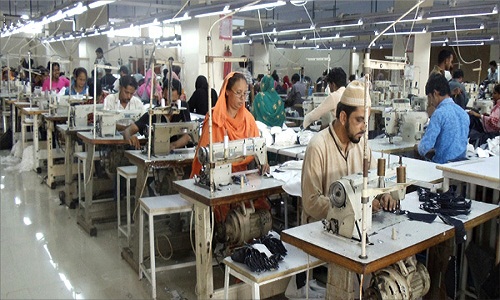
The leather industry of Pakistan is second largest export industry with total export value of $1.220 billion (2007-08) and the industry can grow double in three years and to the level of $5.00 billion in next 10 years if provided stimulus. Surgical industry can start earning at least $700 million within some years, provided, it was given due attention by the concerned government departments. Estimated world market of surgical instrumentation industry is currently around $36 billion and growing gradually, whereas our exports were hovering $245 to $276 million for last two years.
Similarly, hosiery and knitwear exporters are unable to compete in the global market due to higher utility costs, delays in refunds of sales tax, reduction in duty drawback rates and increased rates of export refinance, according to Pakistan Hosiery Manufacturers Association.
Production scenario
Cotton production crossed 10 million bales in the world’s fourth largest cotton producing country, according to the Pakistan Cotton Ginners Association (PCGA). The PCGA urged the government to introduce a five-year cotton policy to raise production to 22 million bales and exports to 3 million bales through crop insurance incentives and quality premium for farmers. Drawing attention to the issue of government and private enterprises failing to supply qualitative, well-germinated and heat- and virus-resistant seeds to the farmers, PCGA said the area under cotton crop should be increased to 4.2 million hectares from the current 3.2 million hectares.
The Pakistan Readymade Garments Manufacturers & Exporters Association (PRGMEA) in November urged Prime Minister Shahid Khaqan Abbasi to personally direct an early release of funds to implement the package as non-payment of refunds and a sharp rise in cotton yarn prices had adversely hit the value-added textile sector.
In December, Pakistan Hosiery Manufacturers and Exporters Association (PHMA) appealed for withdrawal of duty on the import of cotton yarn, a raw material for the value-added knitwear sector, following the proposed withdrawal of custom duties on raw cotton import from India. The sharp rise in cotton yarn prices has hit the value-added garment sector hard. The package had declared a number of incentives on cotton yarn import, but no such step has been implemented so far, said PHMA. The PREGMEA also asked for revision of the textile policy by formulating regulations for specific sectors therein to tackle decline in exports. Foreign buyers are demanding new garments based on raw material, which are neither available in Pakistan nor produced by Pakistani weavers.
Imposing restrictions
The Pakistan Yarn Merchants Association (PYMA) critisised the National Tariff Commission for imposing anti-dumping duties between 3.25 and 11.35 per cent on import of polyester filament yarn (PFY) from China and 6.35 per cent on such imports from Malaysia. Three-fourths of the domestic requirement of such yarn is met through imports. The APTMA in October opposed the suggestion to stop the 4 per cent rebate on yarn exports on the basis of drawback of duties, local taxes and levies on exports. Export of yarn needs patronage, else it may lead to closure of mills. The spinning sector is incurring losses now by selling yarn below its cost due to poor demand from domestic consumers, APTMA felt. As the domestic industry consumes around 70 per cent of the total yarn production, a substantial amount is left unsold, and needs to be exported.
The International Apparel Federation opened its first regional office at the PRGMEA House in Sialkot in September. It will extend support to Pakistani apparel firms in exports, capacity building and compliance. PRGMEA also signed an agreement with the Dutch National Fashion & Textile Association Netherlands on the occasion to support the Pakistani apparel industry. In August, PRGMEA considered setting up a Pakistan Apparels Export Council to facilitate business in the sector.
"With a 15 per cent jump in visitors compared with the previous year, the second autumn event of the CHIC Autumn, Shanghai ended on a positive note. The China International Fashion Fair (CHIC) bolstered companies’ confidence on the domestic industry and presented their innovative streak to the world with this power-packed show. CHIC Autumn was in a true sense a confluence of established brands and young start-ups, capturing 837 brands from 21 nations; attracting more than 65,700 visitors, CHIC projected global insights, Impulses designer area, next to the exhibitors of the Secret Stars section (accessories, shoes, bags). "
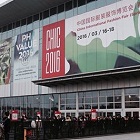
With a 15 per cent jump in visitors compared with the previous year, the second autumn event of the CHIC Autumn, Shanghai ended on a positive note. The China International Fashion Fair (CHIC) bolstered companies’ confidence on the domestic industry and presented their innovative streak to the world with this power-packed show. CHIC Autumn was in a true sense a confluence of established brands and young start-ups, capturing 837 brands from 21 nations; attracting more than 65,700 visitors, CHIC projected global insights, Impulses designer area, next to the exhibitors of the Secret Stars section (accessories, shoes, bags). CHIC Shanghai is considered the ‘window of fashion’ and being a leading trade show in Asia it is the bridge for entering into the Chinese market.
Record number of visitors a sign of positivity
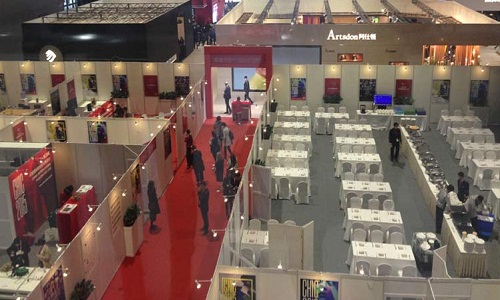
The organisers of CHIC Autumn expressed their gratitude with 15 percent rise in visitors compared to CHIC autumn last year. Chen Dapeng, Executive Vice President, China National Garment Association and Head of CHIC said, “CHIC Autumn fulfills a different task than CHIC Spring. It gives an overview of leading brands and offers smaller brands the possibility to meet prospective buyers.” Moreover brands at CHIC Autumn profit from adjacent activities, such as the gathering at Intertextile. CHIC Autumn presents the right mix of established brands and start-ups.
The clear segments of CHIC Autumn guided visitors through the trade show. The new location of the Impulses area (for young designers) next to the fashion show center was eye-catching. Another success at the fair was the section ‘Secret Stars’ (accessories, shoes, bags), which attracted a lot of attention. Chen Yanrong, Marketing Manager, Henney Bear, confirmed that all important department stores like Wanda, Maoye, Jingying, Dashang visited his booth for discussions. Exhibitors at the sections for menswear and womens wear were satisfied with their results at CHIC Autumn.
Also the organisers of ‘shows-in-show’ expressed their full satisfaction. Nobrand and EcoChic at Pure Shanghai have already announced their next year’s participation. Another highlight was ‘Chic Young Blood’. A strong presence and performance was given by Korean brands, among others by Twee with their brand Te.Stones. They run 30 big stores in Korea and are now building up their business in China thanks to CHIC.
Frankfurtstyleaward Collection 2016 received a lot of attention. The innovative styles of young designers have been presented at the show. Also the joint fashion show of Brazilian Footwear of Apexbrasil EA Asia with trends spring/summer 2017 was well attended and led to a large number of visitors at their joint pavilion. Further fashion shows gave impressive ideas on new trends and tendencies for spring/summer 2017.
Delighted with the response, many of the exhibiting brands have already signaled their participation fosr CHIC Spring to be held in March 2017. Stefano, Giovanni Fabiani (Italy), said, “We started in China some time ago, for the 4th time now at the CHIC and have our own showroom in Shanghai. CHIC is the largest and most efficient show with more and better qualified visitors. At this exhibition, we wrote orders with shopping malls and new contacts, which we have to follow. This time we also had many visitors from the tier III cities. CHIC is an important part of our marketing strategy. It is good to be here, which creates trust with our customers and buyers.” Happy with the response, Bernd Michael Ostwald, Owner, OWA bags, Germany, said they are regular exhibitors at CHIC and welcomed qualified distributors with multi-brand stores e.g. from Beijing at their booth.
The vent saw an increase of 15 per cent with a total number of 65,714 visitors. CHIC Shanghai will be back in March between 13-15, 2017.
"It was all about Industrie 4.0, energy efficiency and sustainability on the first day of ITMA ASIA + CITME 2016. Significant German participation at ITMA ASIA + CITME 2016, flagging off today is offering perfection and precision through tech competency to companies globally. German technology has a major role to play in bringing out eco-friendly and energy efficient process in textile industry globally. With their products and services, VDMA member companies have already taken steps towards Industrie 4.0, in China called intelligent manufacturing."

It was all about Industrie 4.0, energy efficiency and sustainability on the first day of ITMA ASIA + CITME 2016. Significant German participation at ITMA ASIA + CITME 2016, flagging off today is offering perfection and precision through tech competency to companies globally. German technology has a major role to play in bringing out eco-friendly and energy efficient process in textile industry globally. With their products and services, VDMA member companies have already taken steps towards Industrie 4.0, in China called intelligent manufacturing. The VDMA booth (H1F81) is the first point for visitors interested in German technology. Here visitors get an overview of manufacturers and their products in the useful pocket guide, listing all exhibiting VDMA members by halls and showing their stand location in the hall plans.
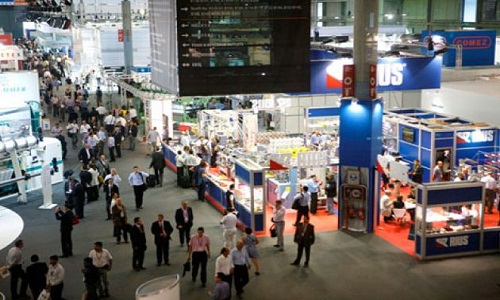
Visitors can witness the high-technology display by more than 100 German machinery manufacturers exhibiting at the fair, covering all aspects of textiles vis-à-vis spinning, nonwoven, weaving, knitting, warp knitting and finishing spread across 7,000 sq .mts.
Mission sustainability
On the opening day of ITMA ASIA, Fritz P Mayer, Chairman, VDMA Textile Machinery and Associate of Karl Mayer Textilmaschinenfabrik emphasised German technology can play a major role in efforts to make the environment cleaner, to increase energy efficiency and competitiveness of textile producers. “For some time now, VDMA member companies have been focusing on the issue of sustainability for their products, in order to satisfy the demand for efficient technology solutions that effectively cut back on consumption, and consequently on production costs” explained Mayer. New technology is the key to better products and competitive production. And, technology is one precondition for resource and energy saving, he explained. Professionally investing customers are happy to pay for sustainable technologies and improved energy efficiency. VDMA calls this ‘Sustainability meets profit’, Mayer explained.
In 2011, VDMA started its sustainability initiative ‘Blue Competence’, to which over 40 textile machinery companies have adhered. Instead of scientific certification experiments and theoretical approaches, VDMA focused on best practice examples. First to mention is an analysis by VDMA experts that examined the energy saving effects over the entire production chain of five textile products: a cotton T-Shirt, a functional T-Shirt a textile billboard, an architectural textile and a hygienic nonwoven. The result of this in-depth analysis is impressive: In the production of these products up to 30 per cent energy can be saved with today’s German technology compared to the one available one decade ago.
Towards Industrie 4.0
The future of the textile industry is determined by Industrie 4.0. This interconnection of information technology and manufacturing processes is on track. As Thomas Waldmann, MD, VDMA Textile Machinery says, “Leading customers are increasingly interested in condition monitoring and predictive maintenance, including remote services.” Other hot topics are: virtual machines, traceability, remote control data exchange, self-optimising, intelligent user interfaces or individualisation. Smart machine controllers will correct process parameters automatically according to the sensors report. Or, if delivery deadlines are not met, downstream production processes will be adjusted immediately. Without discussing the potential of new business models, immediate advantages of Industrie 4.0 are improved plant efficiency, more economical production processes, energy savings, more flexible production, just to name a few.
China a big market for Germany textile machinery
Between January and May this year, the Chinese textile industry imported machinery worth $1.04 billion, with an increased focus on advanced technology. With a market share of 35 per cent, Germany is the biggest supplier. Against the trend of decreasing imports, the deliveries of spinning machinery increased by 20 per cent from January to May, from Germany by 25 per cent.
"The 5th ITMA ASIA + CITME 2016 exhibition which opened today is a landmark as it’s the largest show in the series since inception. The exhibition has as many as 1,673 exhibitors from 28 countries and economies showcasing a wide array of machinery and solutions to an expected visitorship of around 100,000 during the five-day exhibition that closes on October 25. "
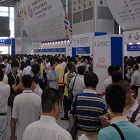
The 5th ITMA ASIA + CITME 2016 exhibition which opened today is a landmark as it’s the largest show in the series since inception. The exhibition has as many as 1,673 exhibitors from 28 countries and economies showcasing a wide array of machinery and solutions to an expected visitorship of around 100,000 during the five-day exhibition that closes on October 25.
The exhibition covers over 170,000 sq. mt. exhibition space, 12 per cent larger than the last edition. This year’s exhibition happens to be the biggest showing since the first edition. These numbers attest to the combined strength of ITMA ASIA + CITME brands making the combined show Asia's most important textile machinery show in terms of exhibiting space and technology. Another first is the staging of combined show at a new venue, the National Exhibition and Convention Centre, Shanghai. Occupying six halls, the modern exhibition centre is easily accessible from the Hongqiao Transportation Hub.

Fritz Mayer, the new President of CEMATEX, is happy with the response to the exhibition. As he says “Despite the current sluggish economic climate, there is a great need for an industry-leading platform in Asia where established textile machinery manufacturers can showcase their products and services and connect with their customers.” Agreeing with Mayer, Wang Shutian, President of China Textile Machinery Association (CTMA) points out the combined show is an Excellent platform to reach Asian buyers. “The overwhelming response is also partly due to the Chinese government's call to embrace automation which will help the industry improve the quality of textiles and cost-effectiveness. Even though economic conditions may be difficult at the moment, textile makers recognise that it is even more critical for them to invest in better technological solutions and to upgrade their facilities,” he says.
China has the biggest number of participants at the show with 69.4per cent of the exhibition space. This is followed by Germany with 6.5 per cent, Italy at 5.5 per cent, Japan 4.7 per cent and Switzerland 3.2 per cent. The exhibition ends on 25 October 2016.
ITMA ASIA + CITME 2016 is jointly owned by CEMATEX and its partners in China - the Sub-Council of Textile Industry, CCPIT (CCPIT-Tex), China Textile Machinery Association (CTMA) and China Exhibition Centre Group Corporation (CIEC).

At its general assembly meeting held in Amsterdam, CEMATEX, Zurich-based European Committee of Textile Machinery Manufacturers appointed Fritz P Mayer as its new president. Mayer takes over from Charles Beauduin who retires after being at the helm for four years.
A German national, Mayer joined Karl Mayer Textilmaschinenfabrik in 1975 after graduating from the University of Darmstadt with a degree in industrial engineering. In 1981, he was appointed managing director of the company and also became a member of the Management Board of Karl Mayer Group. Later in 2007, he was appointed as the CEO of the group.
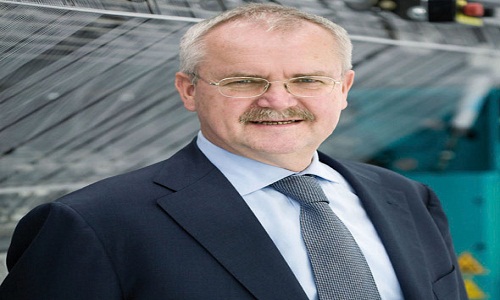
Though he retired from the operational management of the Group in 2013 Fritz still represents the Mayer family on its Supervisory Board. Fritz has also been president of the German Textile Machinery Association, (VDMA) since January 2016. CEMATEX comprises of national textile machinery associations from Belgium, France, Germany, Italy, Netherlands, Spain, Sweden, Switzerland and the United Kingdom and is the owner of Itma and Itma Asia.



